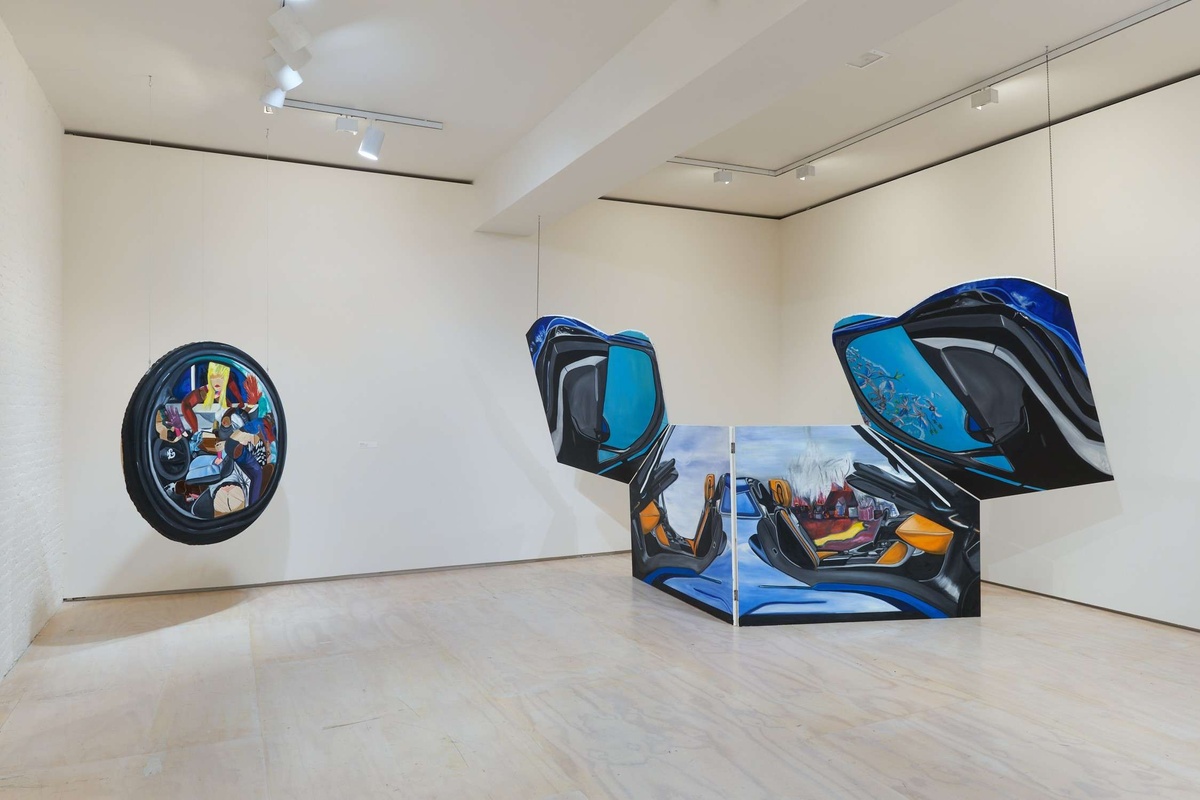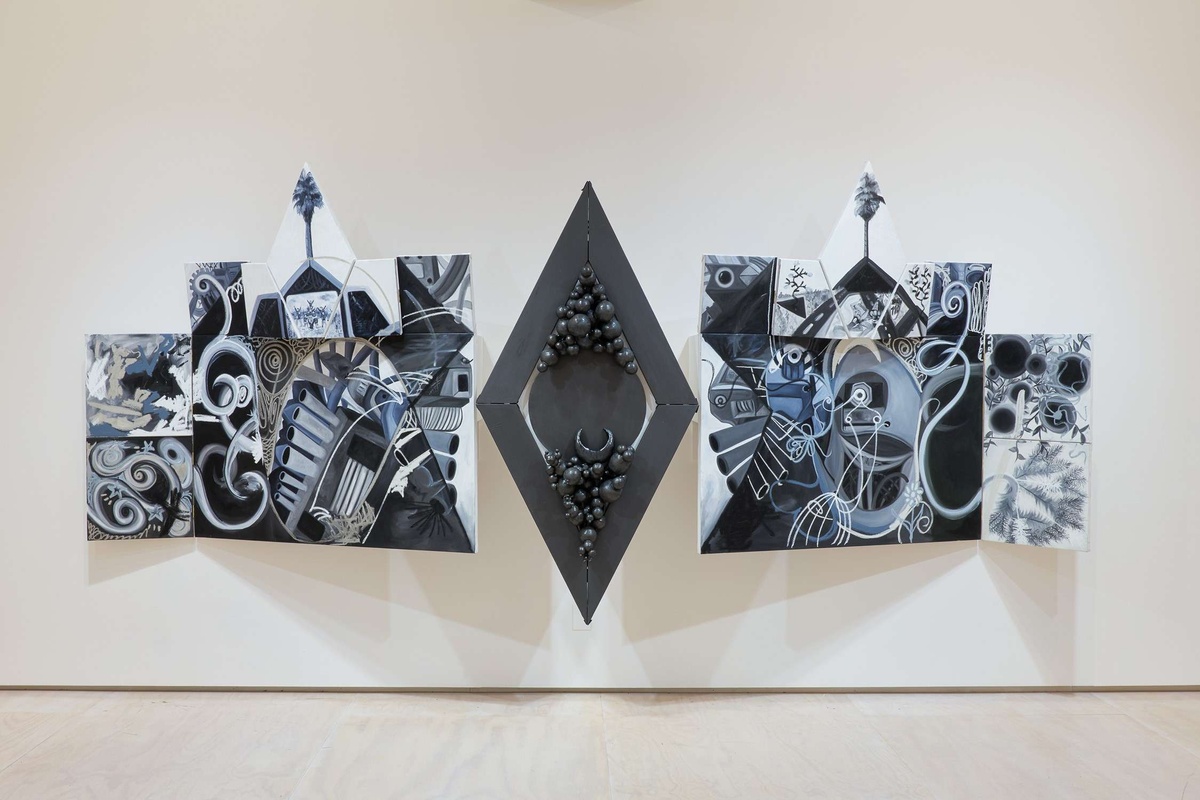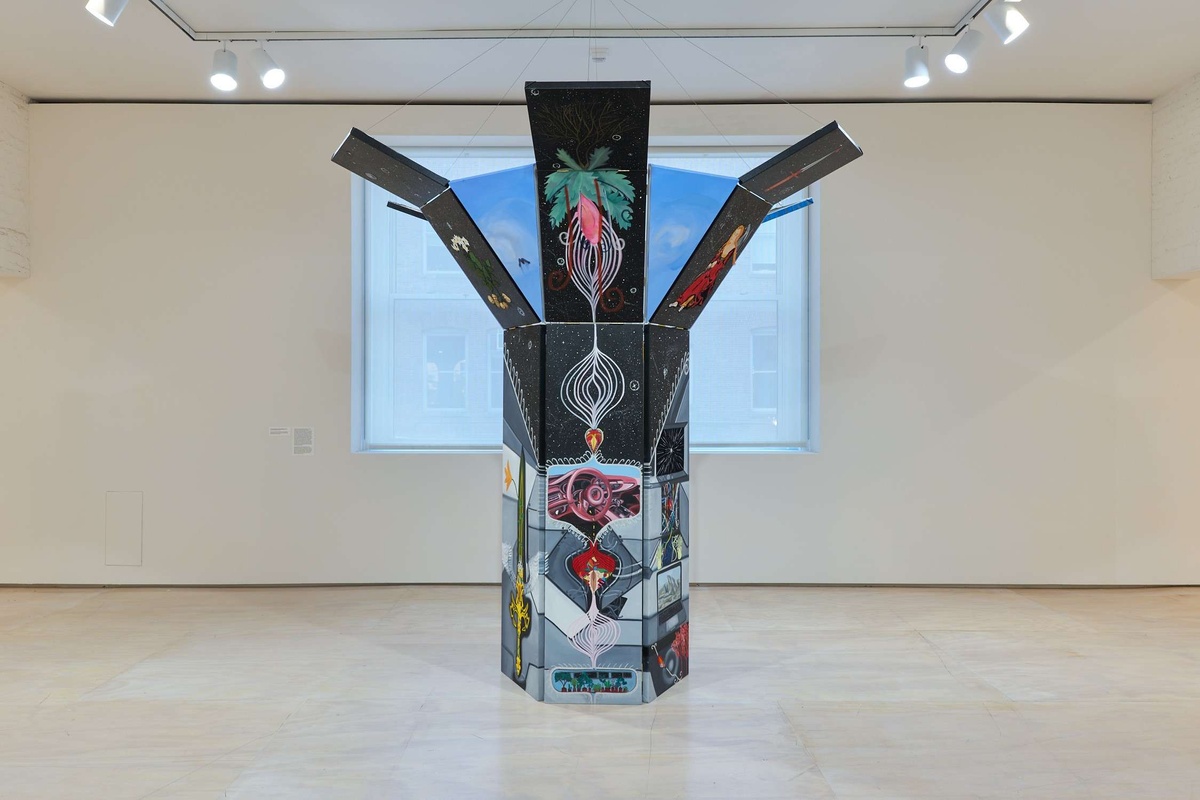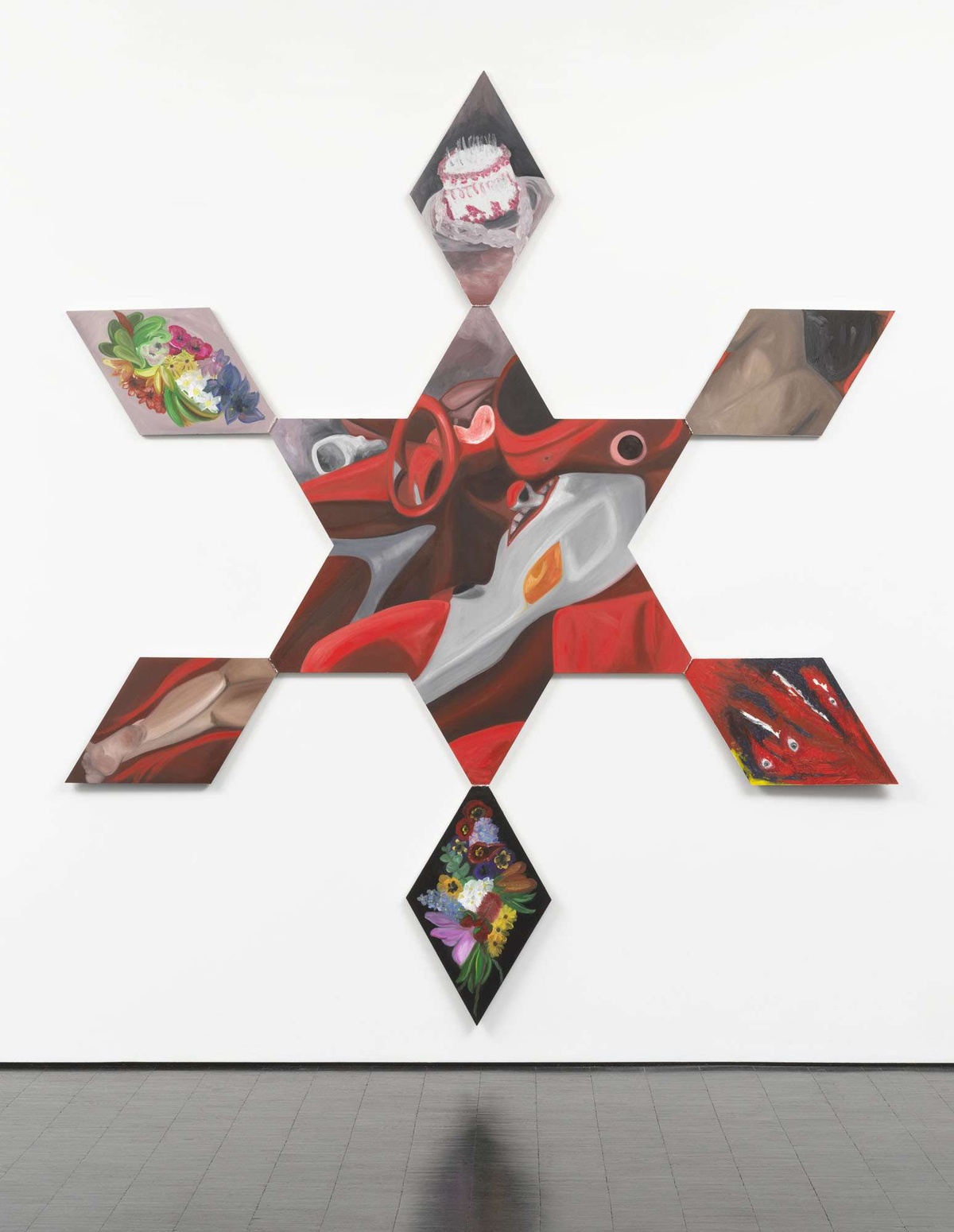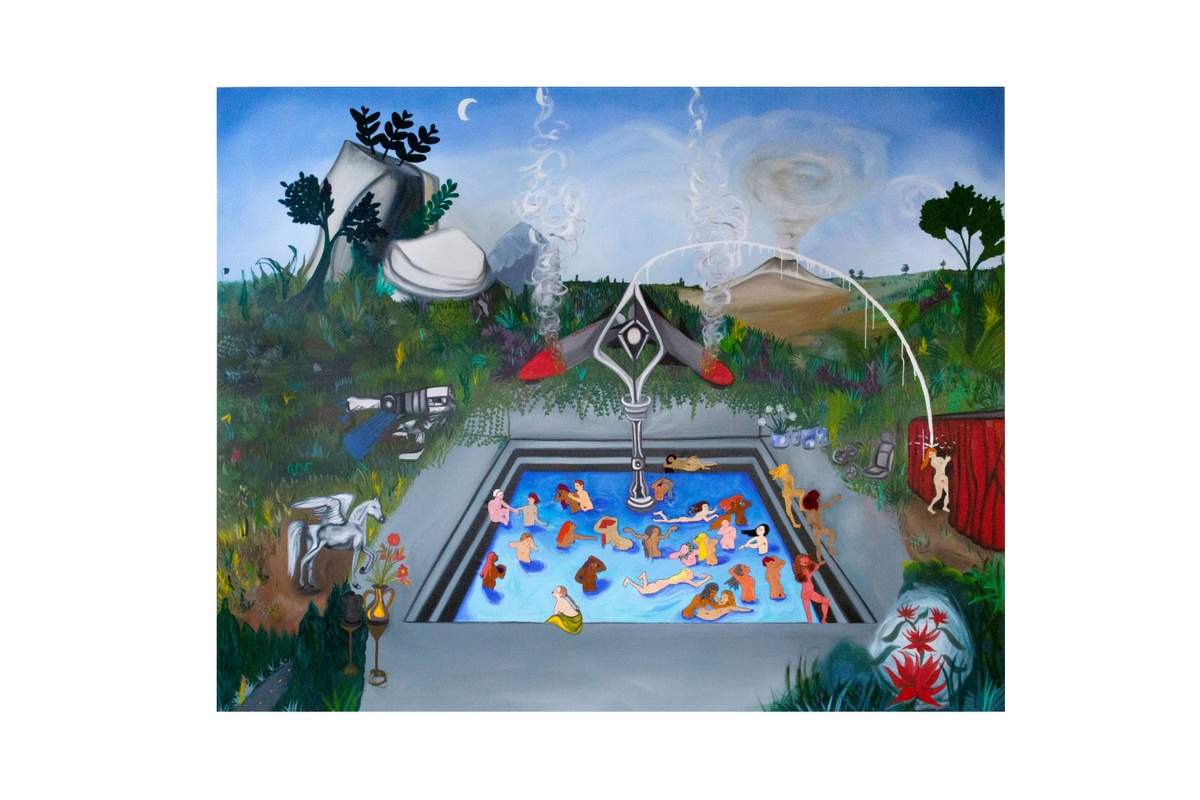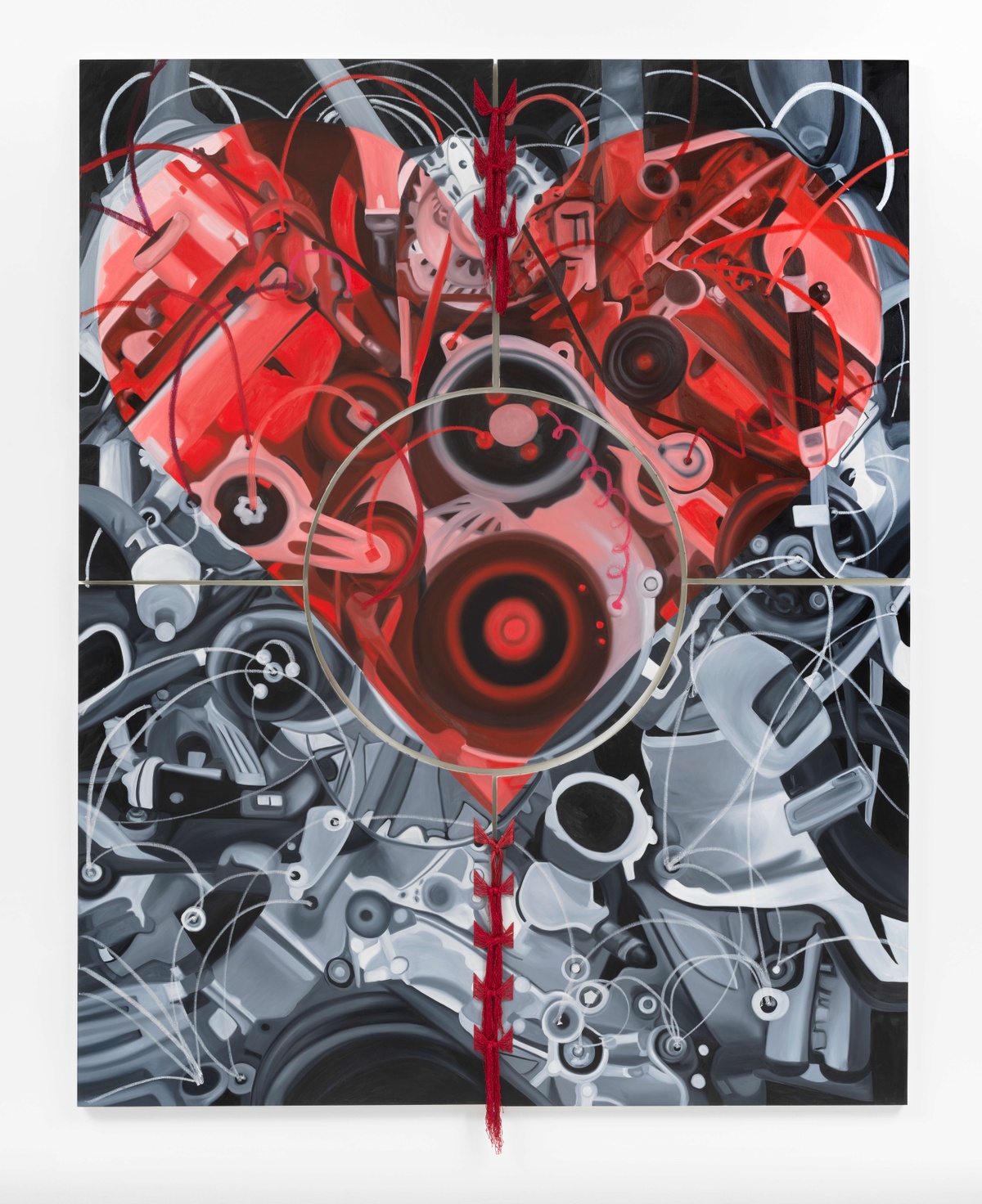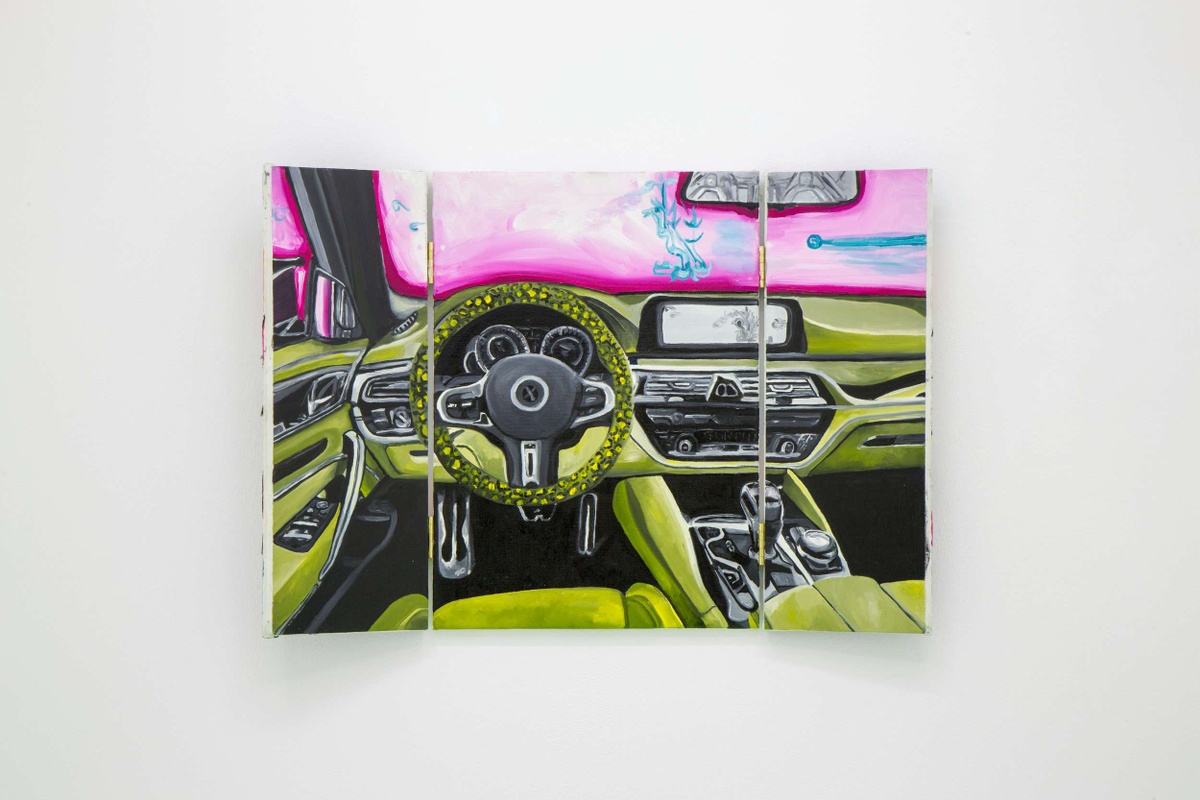Frieda Toranzo Jaeger
Sep 22, 2022 – Mar 13, 2023
- Past
- Exhibition
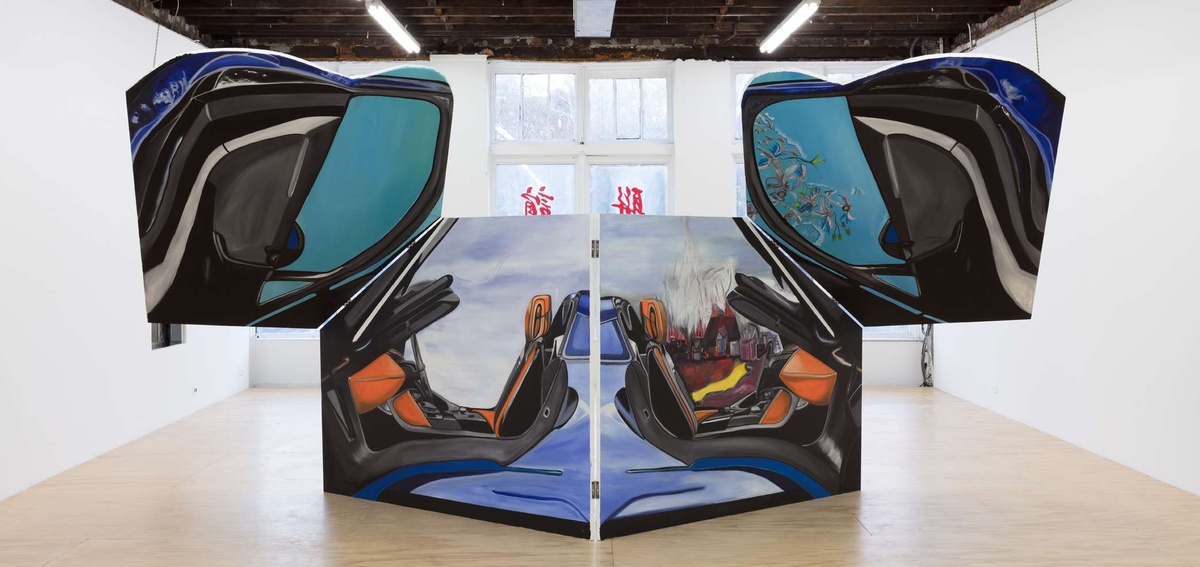
Through her dynamic and modular paintings, Frieda Toranzo Jaeger proposes a futurity of queer freedom, connection to nature, and the creation of new spaces of joy and pleasure. Marking Toranzo Jaeger’s first major solo museum exhibition in the United States, Autonomous Drive brings together over a dozen recent works including three new commissions.
Toranzo Jaeger’s research into the history of painting, with a focus on 15th-century European altar paintings, informs her multi-paneled works. With a particular interest in the sculptural forms and religious symbolism of this period, which was synchronous with Western colonial expansion, Toranzo Jaeger reclaims and expands these references, creating imagined constructions for a world after decolonization. To produce these scenes, she examines traditional origin myths, such as that of Adam and Eve, and recasts them to envision new beginnings.
Toranzo Jaeger’s paintings verge on the sculptural, with multiple tableaux that combine into elaborate narrative scenes. Often featuring hinged elements, so that they may be displayed open or closed, her multifaceted perspectives break from linear narratives. Toranzo Jaeger’s family often works with her to embroider her paintings—adding layers to the surface of the canvas and puncturing the conventions of painting by incorporating traditional techniques.
The relationships between movement and technology are essential themes that emerge in the content and construction of Toranzo Jaeger’s works. From 15th-century altar paintings to the interiors of hybrid cars, Toranzo Jaeger’s subjects speak to the many vehicles for continued colonization and control of vast territories, including outer space. In Toranzo Jaeger’s depictions, however, she imbues these vehicles of colonization and the worlds they inhabit with the potentiality of love as an antidote to colonial thinking. In this sense, Toranzo Jaeger’s work transforms spaces of technological domination. Leveraging hybridity and automation, her paintings signal ontological shifts and queer becomings that resist existing power structures.
